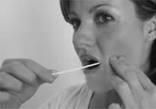After DNA samples arrive at the laboratory, IDENTIGENE paternity test results are released in two business days. And they may not always be what are expected!
Sometimes when results of DNA testing show 0% probability, meaning the alleged father is not the biological father, there are some loci (or markers) in the report that do match between the alleged father and child. Participants may not understand why this occurs in DNA testing if the two participants aren’t related, so here’s a quick overview of how this happens.
Basics of a DNA Paternity Test
In paternity testing we generate DNA profiles using Polymerase Chain Reaction (PCR) process. PCR is the process of taking a small piece of DNA and making many enlarged copies so it can be measured for a paternity test. In the DNA profile analysts look at 15 specific loci or markers (location on the DNA chromosome for a gene) which are then reported on the DNA test results. The profiles are compared for all participants to determine if the alleged father and child match at all 15 markers or locations. Because the child gets 50% of its DNA from the biological father and %50 from the mother, there must be a match at all loci for the alleged father to be considered the biological father. If there are any mismatches, then the alleged father will be excluded, even if there are a few matches.
Loci Matches on Paternity Tests
A few positive matches can happen in DNA paternity testing because there are specific markers that are common among the population. When you look at the profiles on a paternity test, and there are some matches, this does not necessarily mean the participants are related. Each matching loci between the alleged father and child is calculated into a paternity index which measures the strength of a genetic match. This indicates how common that marker is in the population. Sometimes markers are very common so people that are not related may match at certain locations.
As stated above, in order to be a biological parent there must be a match at each location (with the rare exception of one mutation, which is a change in a gene passed from parent to child). If a possible mutation is identified, additional markers will be tested.
This is why you may have some locations that match on a paternity test but paternity test results nevertheless indicate the alleged father is not the biological father.









